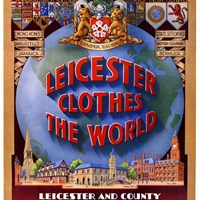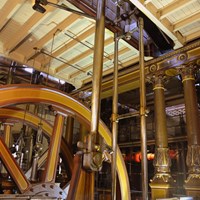Boom Time and Heyday 1860 - 1960
Between 1840 and 1860 Britain experienced a period of rapid economical growth. The rail network in Britain expanded to around 10,000 miles of track meaning goods could be transported across the country within a matter of hours. Opportunities for business opened up and the economy boomed.
See objects from this period in our virtual museum.
Between 1840 and 1860 Britain experienced a period of rapid growth that saw many changes in the workplace and in society.
Find out moreThe end of the nineteenth century saw an upturn in the British and world economy. Growth in I. & R. Morley's sales created a turnover of £3.06 million from a workforce of 8364 employees, a considerable proportion of whom (3,950) still worked from home.
Find out moreBy 1851 more people lived in towns than in the countryside in Britain. Leicester's population expanded by 40% during the 1860s from 68,000 to 95,000.
Find out moreThe outbreak of war in 1914 created new challenges and opportunities for the knitting industry. Economic growth was brought to a halt as uncertainty spread across the world.
Find out moreThe rationing and controls imposed during the Second World War remained in place in the immediate post war period. The fragile economy needed careful management to ensure that the country recovered from the effects of the war.
Find out moreSince the time of William Lee, the knitting industry has been supported by the knitting machine building industry. Before the nineteenth century, knitting frames closely followed the design of Lee's frame.
Find out moreDuring the Victorian era, railways made it easier for producers to sell goods across the whole country. To ensure that the customer knew whose product they were buying, firms began to label their goods.
Find out more





